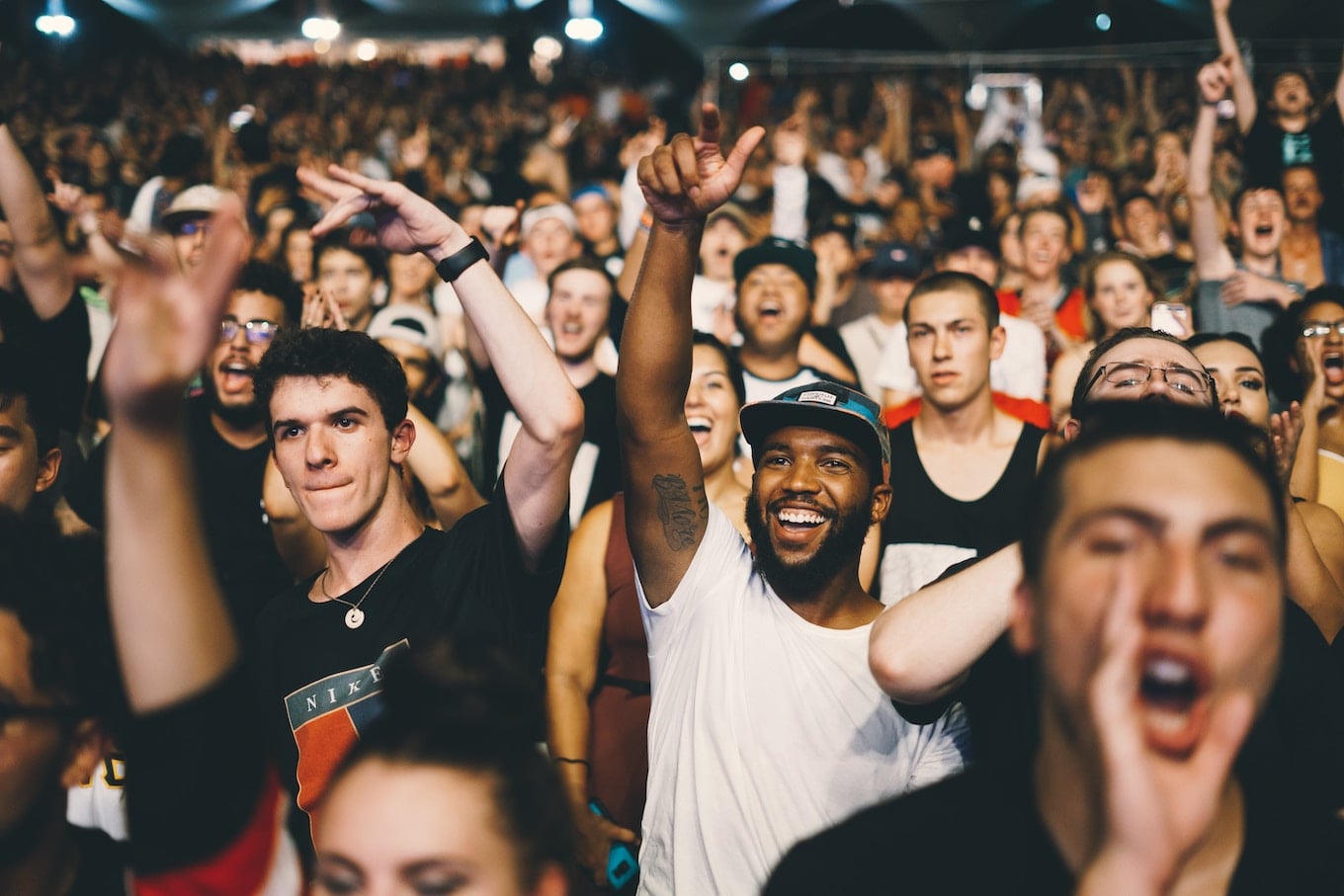5 questions to ask: Are you ready for the next live event near you?
Editorial Team
5 min read
In 2018, brands spent an estimated $480 million on advertising during the Super Bowl. A 30-second TV spot cost $5.24 million alone—but with nearly 100 million viewers, many companies are willing to fork over the big bucks to be featured in high profile events.
Most businesses don’t have a cool five million dollars to spend on one event. But, for small businesses, high profile events can still bring in a significant business bump. Whether it’s the Super Bowl, Coachella, March Madness, or a big business conference, small businesses located near such events can profit from their proximity. All it takes is a little strategy and preparation for merchants to bring in more foot traffic, visibility, and buzz around their brand. Here are five questions merchants should ask to get ready for the next big event in their community.
1. How will you stand out?
Out-of-towners present a big opportunity for some new business: as long as they know you exist. How are new customers visiting for a short time going to hear about your business? Do a little “lightning marketing”—short term, highly targeted advertising—separate from your traditional marketing to spread the word about your business. Look for ways to partner with event organizers to be featured in event programs, online, or somewhere at the event site.
Likewise, you should have a strategy for capitalizing on the buzz you build during this short time. Ask for reviews on your platform of choice. Be prepared for an influx of online reviews via Google Business or Yelp—and have a strategy to respond to feedback, both good and bad.
2. Who are your new customers?
The first step to capitalizing on a live event is being able to tailor your offering to the attendees. A business conference is going to have a very different set of consumers than a music festival. Talk to the event organizers to find out how many tickets are being sold, what the event schedule is, and who the main event attendees will be. This can help you tailor your offering, plan for dips and peaks in foot traffic, and be strategic in how many “special promotions” you give out.
For example, a restaurant may offer a 2-for-1 lunch deal to business conference attendees looking to do some networking between conference sessions; at an all-day music festival, it might be a better strategy to box up some lunches that people can buy with their morning coffee. Know who is coming, and when, to make sure your business is ready to go.
3. Should you provide a limited-time offer or special promotion?
Some businesses use a live event as an opportunity to test a new product or service, packaging it as a limited-time offer or special promotion. Try a new marketing message, mix up your menu, or bundle products together in a new way to see how visiting consumers will respond. This is a good opportunity to get data points quickly—is this going to work for your existing customers? Is this menu item something that will bring in profit? Use the live event to test something without the risk of alienating your existing customer base.
A “special promotion” can also be a quick way to move inventory. Bundle deadstock with some of your best-selling items to cross sell or upsell to a completely new audience. Build a package that speaks directly to the consumer coming in from out of town, while also moving product your normal customers haven’t gone for in the past.
Alternately, high-visibility moments may not be the best time to try new things. If your goal is to capitalize on the increased demand, maybe you want to limit your offerings to those high-value items: best-sellers or high margin items that can reliably deliver a big profit. Limiting your offerings can also help speed up operations and optimize inventory management. Streamline your menu or offer a “game-day” special on those items you know people will go for.
4. What’s the ideal staffing for live event days?
During the Super Bowl, Pizza Hut sells an estimated 2 million pizzas in franchises around the US. That one night of frenzied dough-flipping actually takes days, if not weeks, to prepare. From folding pizza boxes to chopping ingredients, there’s a lesson there for any business expecting a big surge in business.
Staffing up for live events is a given, but it’s a little more complicated than just making sure your team is available. How much staff do you need a few days in advance to prepare? Break it down to a timetable, starting with an hour-by-hour approach to the live event day and working out. For example, if the game starts at 7:30PM, pre-drinks and early dinner may begin as soon as 5PM. Then it might be dead until the game lets out at 10PM. You’ll need a team in earlier in the day for ingredients prep, and a team after to help clean up. Optimize your hourly crew based on these anticipated ebbs and peaks.
5. Are you (physically) ready for the foot traffic?
Is your store ready to bring in new customers? Consider your front-of-house experience, and how customers will be drawn into your location. You should also think about crowd control: if you’re a bar right next to a stadium, you’re the obvious spot for pre-game drinks. But you might also be the nearest overflow bathroom when the stadium’s are crowded. How is your team going to handle the influx of people? A tool like Clover Flex provides merchants with maximum flexibility to unchain themselves from the counter and take orders wherever the customer happens to be. Get ready to meet your new customers, close the sale, and capture the event bump to its fullest potential.
Related Posts
Importance of cybersecurity training for employees
Full Service Restaurants (FSR)
How to help increase restaurant sales
Popular Topics
Stay In Touch
Sign up and learn more about Clover.
Thank you for your subscription!
Recent Stories
- How to buy a restaurant
- How to evaluate employee performance like an enterprise company
- Dropshipping: What it is & why it might be smart for your small business
Please share your contact information
to access our premium content.
Thank you for sharing your contact information.
Download Now





